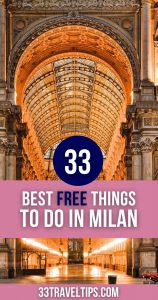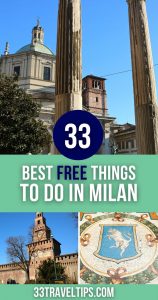
Do you want to visit gorgeous Milan, Italy without breaking the bank?
Many of the attractions, including the famous gallery Pinacoteca di Brera or the splendid Milan Cathedral Il Duomo aren’t free. But the good news is, there are a ton of alternative free activities in the city.
In fact, we’ve included 33 amazing free things to do in Milan on this list.
From marveling at imposing cathedrals and street murals to strolling through lush parks and the coolest neighborhoods, you’ll definitely find enough to fill up your itinerary.
Ready to explore Milan for free? Let’s dive right in!
Start Planning Your Trip to Milan with Our BEST Recommendations:
⭐ Top Tours in Milan ⭐
📍 Milan Historical Walking Tour – visit the highlights of Milan’s Renaissance history and skip the lines to see Da Vinci’s “The Last Supper”.
📍 Pasta and Risotto Cooking Class – explore Milan’s central market and learn how to prepare authentic Italian dishes in a fun and entertaining environment.
⭐ Best Accommodations in Milan ⭐
🏨 iQ Hotel Milano – our top pick is this 4* gem near Milano Centrale.
🏨 Heart Milan Apartments Duomo Colonne – funky lodging near the Duomo.
⭐ Easiest Transportation Options in Milan ⭐
🚍 The Milan Pass City Card – enjoy discounts, free travel, and entrances to museums.
🚍 Discover Cars – compare and find the best rates for car rentals.
✅ Note: This article contains affiliate links. In case you purchase something through one of these links, we may receive a small commission at no extra cost to you. Thank you for helping us keep creating the free content on this website!
Visit the Free Milanese Cathedrals and Churches

If you’re only looking for free things to do in Milan, know this:
Visiting the Duomo requires a ticket. However, exploring the magnificent cathedrals in this section doesn’t cost a cent.
- Santa Maria delle Grazie. The Holy Mary of Grace is a massive Renaissance church and a Dominican convent. The 15th-century redbrick temple features intricate terracotta walls and elaborate Gothic interior. Santa Maria delle Grazie is a UNESCO World Heritage Site and home to Leonardo da Vinci’s The Last Supper. Note: You can see the famous mural at the refectory of the convent, not in the church. You need a ticket and booking in advance is required.
- Basilica di Sant’Ambrogio. The Romanesque church is one of the oldest in Milan. It was built in the 4th century. A serious renovation in the 12th century left it in its current style. The basilica has an elegant courtyard and a crypt containing the remains of several martyrs. You can pay respect to the Saints Ambrose, Gervasius, and Protasius in the crypt at the back of the church, under the altar.
- Basilica di San Nazaro Maggiore. St. Ambrose himself founded the church in the 4th century and dedicated it to the Apostles. It was the first religious construction in the Western Catholic world in the shape of a Latin cross. The basilica houses relics of the Apostles and the body of St. Nazaro. It is also the last resting place of the wealthy Gian Giacomo Trvulzio, a great patron of the arts. His mausoleum was added to the church in 1512.
- Basilica San Lorenzo Maggiore. This basilica also dates back to the 4th century. While Romans laid its original foundations, San Lorenzo Maggiore was rebuilt several times over the centuries. You’ll find it close to several other free things to do in Milan – the Roman Colonne di San Lorenzo, the medieval Porta Ticinese, and the street art mural The Wall of Dolls. The imposing early-Christian church has an octagonal chapel decorated with ornate mosaics, large windows, and massive columns.
- Basilica di Sant’Eustorgio. The Romanesque-style church was founded in the 4th century as well. The Basilica of Sant’Eustorgio used to be an important stop on the pilgrimage journeys to Rome and to the Holy Land. Pilgrims believed it held the tomb of the Three Kings. Whether you trust the legend or not, don’t miss checking out the historic paintings and the tomb of St. Peter of Verona, adorned with staggering life-sized sculptures.
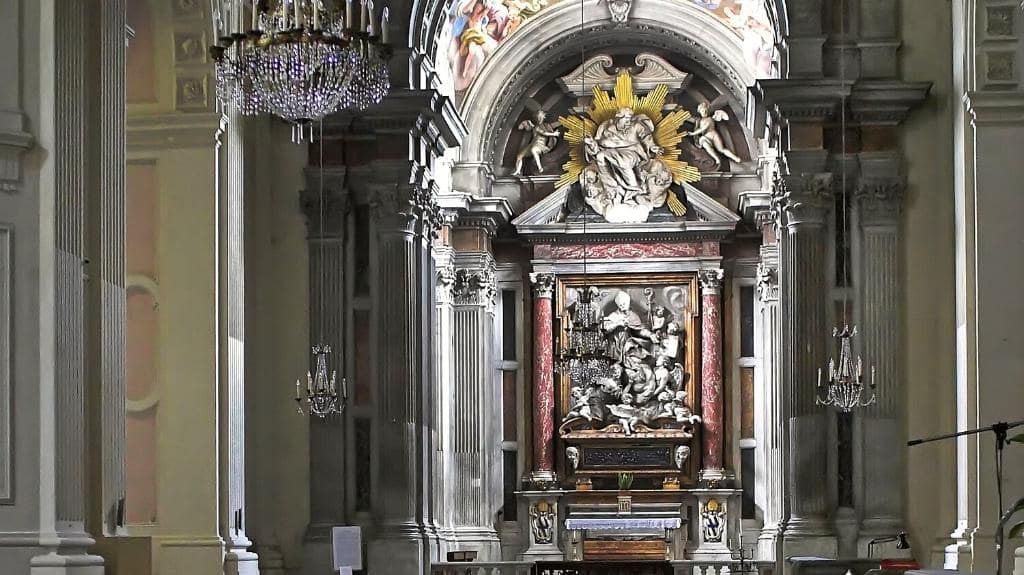
- Santa Maria del Carmine. This 15th-century Romanesque church prides itself on several striking paintings, frescos, and statues. Carlo Maciachini designed the current façade and completed it in 1880. The noble tombs in the chapels and niches of the church testify that it was a favorite place for aristocratic burials. In the naves and transepts, you can marvel at several art masterpieces. Don’t miss the floor tiles with clever geometrical patters and the richly engraved altar as well.
- Chiesa di San Maurizio al Monastero Maggiore. The colossal 16th-century church was built partially using older Roman edifices. Originally, it was attached to the most important Benedictine convent in Milan, Monastero Maggiore. Today, the monastery houses the astonishing Archaeological Museum (see below). Inside the church, you’ll see remarkable artwork depicting biblical scenes. The cycle of frescos covers the walls and tells stories about the life of San Maurizio.
- Chiesa Parrocchiale di San Marco. Initially erected in Gothic style in the 13th century, the church underwent renovation and expansion four centuries later. The modifications were in Baroque style and turned San Marco into the second-largest temple in Milan after the Duomo. Frescoes with religious scenes from different periods decorate the walls. The most prominent painting is the Madonna with Saints by Gian Paolo Lomazzo. In the left transept, you can also see a rather unusual wax statuette of the Holy Child Mary from the 19th century.
- Basilica di Santa Maria della Passione. The basilica is one of the most important monuments of the late Renaissance in Milan. Built and modified between the 15th and 17th centuries, Santa Maria della Passione incorporates the genius of several great architects of the time. It’s considered a genuine art gallery. The façade shows a series of panels depicting the Passion of Christ. The interior contains a cycle of monumental frescoes, titled Christ and the Apostles. Several other extraordinary canvases, as well as two organs, further accentuate the church’s splendor.
- Basilica di San Simpliciano. St. Ambrose founded this early-Christian church, shaped like a Latin cross, on the site of a pagan cemetery. Its elegant interior features art from different eras. Renaissance, Baroque, Rococo, and Neoclassical elements will fight for your attention. Stained-glass windows play with the sunlight and produce colorful images on the walls and floors. The apse vault holds the titanic masterwork by Ambrogio Bergognone, the Coronation of Mary.
Discover Milan’s Free Museums and Monuments
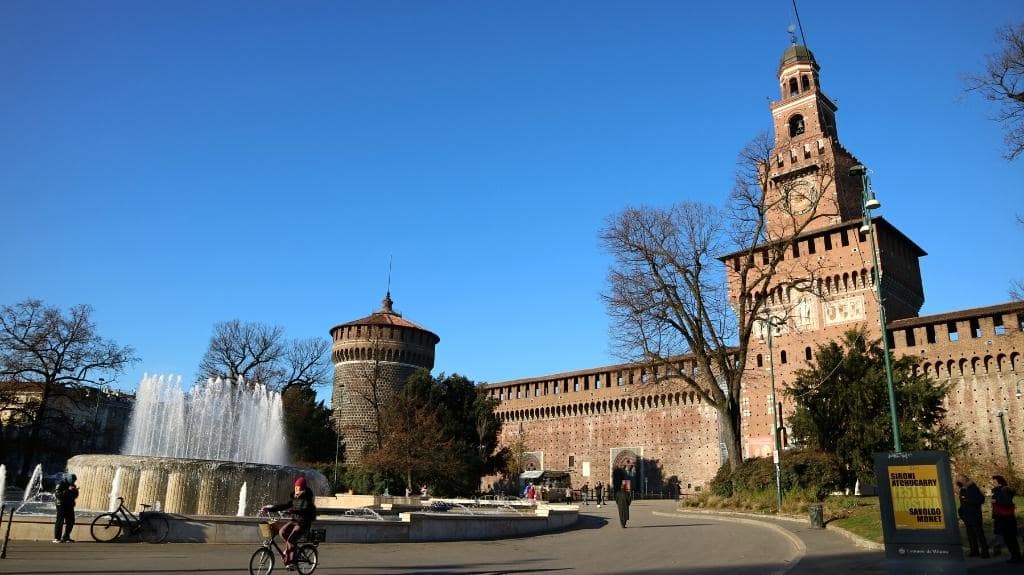
Milan prides itself on several extraordinary museums. Most of them offer free access twice a month. On top, the city offers a ton of free attractions and monuments for you to explore. Let’s check the ones which make Milan worth visiting.
- Milan’s Municipal Museums offer free entrance days. All Civic Museums in the city offer free entry on the first and third Tuesday of the month after 2:00 PM. We advise you to reserve a spot since the interest is enormous. Here’s a list of the most interesting collections:
- Sforzesco Castle Museums – a complex of over 10 museums.
- Natural History Museum.
- Archaeological Museum.
- Planetarium Ulrico Hoepli.
- Acquarium of Milan.
- Sforzesco Castle. The gigantic Sforza’s Castle is a medieval fortress built in the 15th century by the Duke of Milan. Nowadays, it’s one of the top attractions in the city. The best part? You can explore its breathtaking exterior and courtyard completely free. If your curiosity isn’t satisfied, you can visit the numerous museums housed in the colossal structure. Masterpieces by Leonardo da Vinci and Michelangelo are on display inside. Tip: If you’re a fan of the works of Leonardo da Vinci, we recommend visiting Leonardo 3 – a fascinating interactive display of his creations.
- Arco della Pace. Similar to the Arc de Triomphe in Paris, the triumphal arch at the northwest end of Sempione Park was erected at Napoleon’s request. He wanted to connect Milan and Rome with Paris via a series of arcs. The Milanese Arch of Peace is in Neoclassical style and features bas-reliefs and statues. The area around the arc attracts people of all ages who exercise or simply sit, relax, and take in the views.
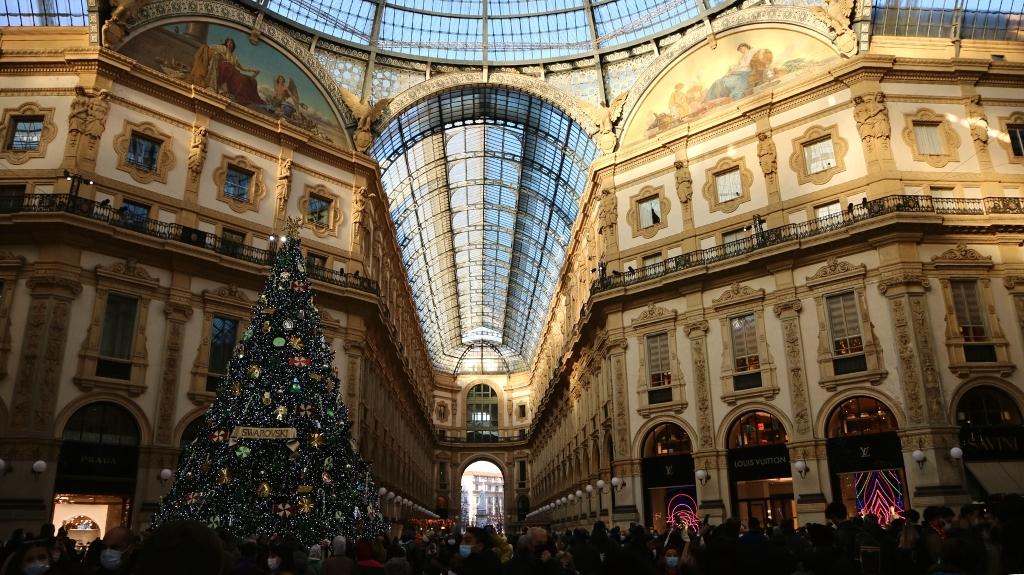
- Galleria Vittorio Emanuele II. The famous historic shopping arcade is one of the major attractions of Milan. It was built between 1865 and 1877. The glass-covered, four-story mall with mosaic floors is home to luxury brands, upscale restaurants, posh hotels, and even museums. Take your time to look at the intricate façades and the vibrant coats of arms on the floor. At the center of the arcade, you’ll see a small group of people. They’re waiting to spin on the bull’s balls. Legend says that if you make a wish and spin on your heel without help or tipping over, your wish will be granted. Try it and let us know what happens.
- Colonne di San Lorenzo. The Columns of St. Lawrence are incredibly well preserved and even better incorporated in modern-day Milan. The archeological site consists of 16 tall marble columns from the time when the city was the capital of the Western Roman Empire. Near the columns, you’ll also find remains of an amphitheater and a bathhouse.
- Cimitero Monumentale. Only the brave will include a cemetery on their itinerary. However, you’ll miss one of the most unusual free attractions of Milan if you don’t visit Cimitero Monumentale. Much like the Parisian cemeteries, it is famous for its magnificent funerary sculptures in various architectural styles, which adorn the tombs and graves of popular artists, architects, and wealthy citizens.
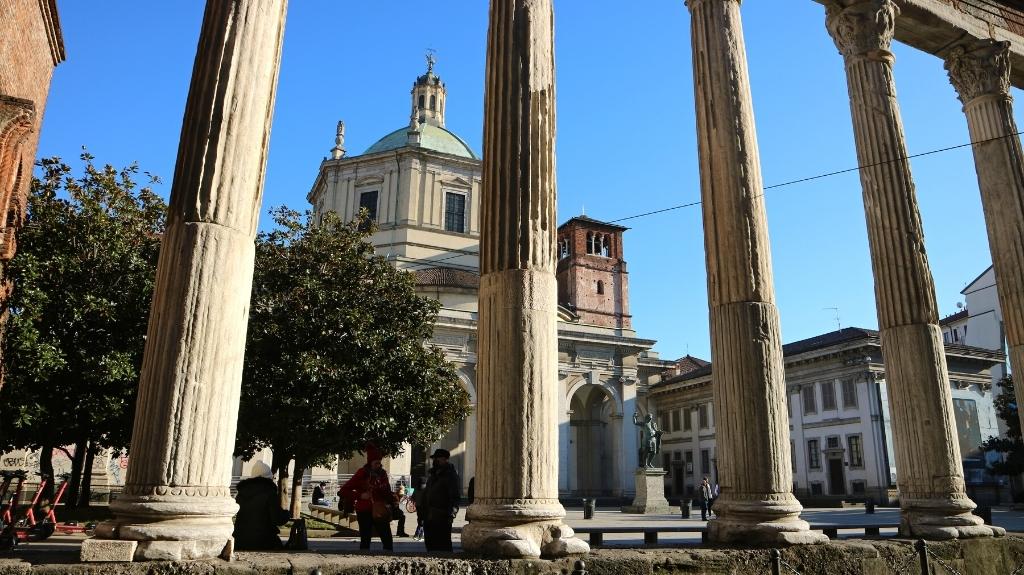
- Porta Venezia. Next to Giardini Indro Montanelli (see the next section), stands one of the most striking monumental gates of the city of Milan. The historical gate in Neoclassical style was erected in the 19th century. Older gates, which were part of the Medieval and Roman city walls, stood before it in the same location. The current porta consists of two twin buildings. They used to host customs offices, which charged merchants entering Milan from northeast.
- Porta Garibaldi. This imposing stone gateway stands on the old road to Como. The Neoclassical central arch was built to commemorate the visit of Francis I of Austria in 1825. In 1860, the city authorities dedicated the monumental structure to Garibaldi, the general who contributed greatly to the unification of Italy.
- Porta Ticinese Medievale. You’ll find the medieval city gate near the Basilica San Lorenzo Maggiore and the Columns of St. Lawrence. The ancient Porta Ticinese is one of the two medieval city gates that still exist in Milan. The structure was originally erected in the 12th century. In the 16th century, it became part of the Spanish walls. It was later restored in 1861. Imagine the layers of history this single building reveals!
- Palazzo Imperiale di Massimiano. This archaeological site is tucked between residential buildings. Even today, while looking at the remains, you can still imagine the splendor of the Imperial Palace. It was built in the 3rd century, during the rule of Augustus Maximilian. In this period, Milan was the capital of the Western Roman Empire.
Stroll the Parks and Green Spaces of Milan
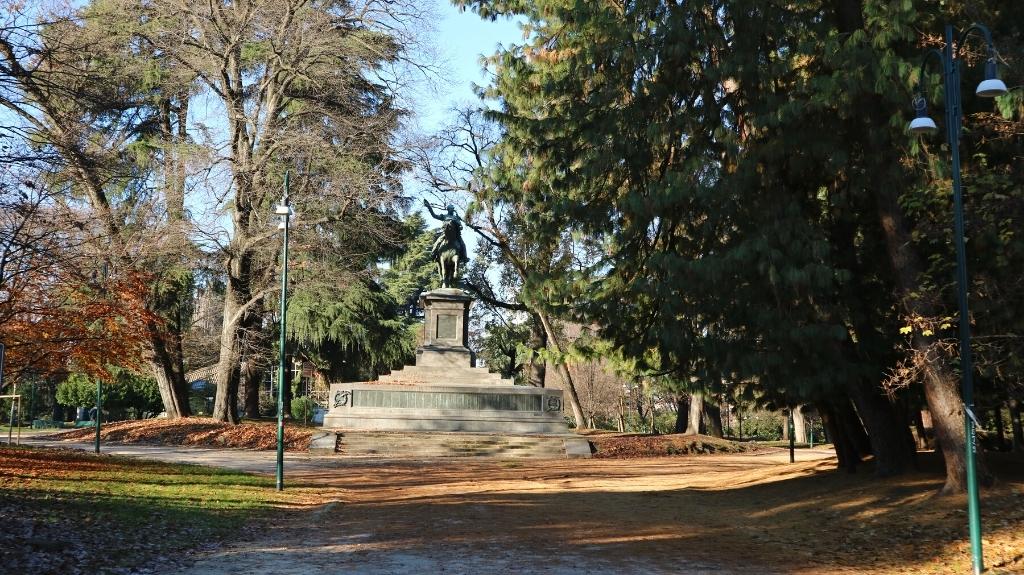
Milan hosts over 50 parks and gardens. The green zones of the city are free to visit and offer relaxation from the crowds. Below, you can discover our top picks for a city break in nature.
- Sempione Park. The massive historic garden is the most famous in Milan. On one end, you’ll find the gigantic Sforzesco Castle. On the opposite, the Arco della Pace awaits to spellbind you. In Sempione Park, you can also explore a man-made pond, a tower, an aquarium, a theater, and a library, as well as countless manicured lawns and historic monuments.
- Giardini Indro Montanelli. The 18th-century public garden is home to the splendid Natural History Museum, the majestic Palazzo Dugnani, and the intriguing Planetarium Ulrico Hoepli. Ride the mini train, take a stroll through the magnolia forest, and pay respect to the monument of the journalist Indro Montanelli, whose name the park carries. In the winter months, you can also visit a cool Christmas Market with an ice skating rink, fun rides, and food stalls in the park.

- Orto Botanico di Brera. The Brera Botanical Garden is a true oasis of tranquility. It opened its gates in 1774 and has welcomed visitors ever since. The garden seduces with its many small corners where you can sit and enjoy the vibrant flowerbeds, the playful ponds, and the centuries-old trees.
- Giardini della Guastalla. This small and quiet urban park dates back to 1555. The traditional Italian-style garden features intricate statues, lush meadows, winding paths, and a peaceful fishpond. Take a stroll in the sun or sit and enjoy the shadow of the big, old trees.
- Parco Biblioteca degli Alberi. You’ll find this contemporary urban space a bit further away from the center of Milan. Still, if you’re in the area, don’t miss the chance to relax for a couple of minutes and marvel at the geometrical botanical garden with modern landscape design. Skyscrapers, restaurants, and event centers surround the park.
- Parco Giovanni Paolo II. The tiny green space attracts with its wide, lush lawn, two historic basilicas, and kids’ playground featuring climbing equipment. If you’re visiting Basilica San Lorenzo Maggiore or the Columns of St. Lawrence, don’t miss a chance to catch your breath from sightseeing in this little urban oasis.
Explore the Cool Districts and Areas of Milan for Free
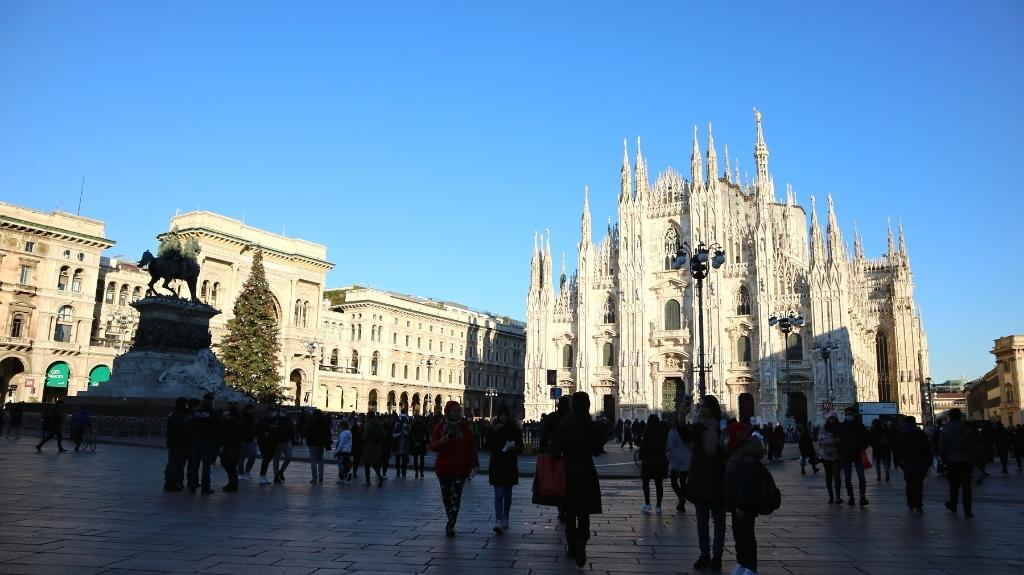
Milan is famous for being one of the fashion capitals of the world, alongside London, Paris, and New York.
And while shopping could turn into a luxury activity within seconds, window shopping and people-watching are among the best free things to do in Milan.
In this section, you’ll discover the coolest districts and areas to see the latest trends in fashion, both on mannequins and on real people.
- Piazza Duomo. Milan’s central plaza attracts the biggest crowds in the city. The Royal Palace, Milan Cathedral, and Galleria Vittorio Emanuele II flank the square. The equestrian monument of Vittorio Emanuele II, the first king of Italy, faces the Duomo. Free concerts and celebrations take place regularly at the square. Tip: If you wish to avoid the masses, come as early as 9:00 AM, when the Duomo opens its gates. To skip queueing at the ticket office – which is located in a different building – order your tickets online.
- Piazza dei Mercanti. Hidden between Piazza del Duomo and Piazza Cordusio, you’ll find the medieval Merchants Square. It was the heart of the city during the Middle Ages. In the 13th century, you could enter the plaza from six entry points. Each of them was dedicated to a specific trade: from sword blacksmiths to hat makers. Until the late 19th century, it held the most important traditional Christmas fair in Milan. Nowadays, the square hosts regular free outdoor exhibitions, markets, and concerts.
- Via Dante. The beautiful pedestrian street connects the areas of Piazza Duomo and Sforzesco Castle. Named after the great Florentine poet Dante Alighieri, the avenue is known for its numerous theatres, trendy shops, posh restaurants, cozy cafés, exquisite bars, and stunning townhouses. The elegant city residences, which line the street, date from the 18th and 19th centuries.
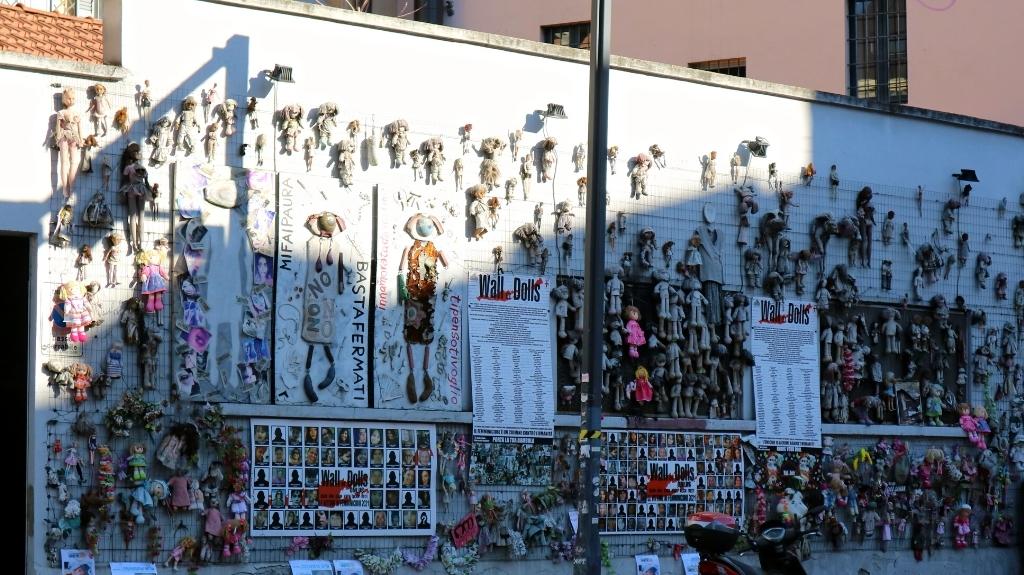
- Fashion District. One of the things Milan is best known for is its fashion designers. In the city, you’ll find countless luxury brands, as well as midrange and budget apparel. The Quadrilatero della Moda, also known as Quad d’Oro, is the upscale shopping area of Milan. Most of the stores are concentrated around Via Monte Napoleone. Designer boutiques, antique shops, and trendy cafés occupy Neoclassical mansions and seduce visitors with vibrant colors, unique shapes, and posh interiors. Strolling and window-shopping in the area are some of the most exclusive free things to do in Milan.
- Navigli Quarter. The area attracts with its picturesque twin canals and cobblestoned streets, packed with modern art galleries and vintage stores. During the day, Viale Papiniano Flea Market and the monthly Mercatone dell’Antiquariato entice you with a great selection of leather accessories, hand-made jewelry, and shiny antiquities. If you’re looking for nightlife entertainment, this is the best area to stay in Milan. You’ll never run out of dining and party options in Navigli. Anything from budget-friendly pizzerias to the waterside, fine-dining trattorias, and from cozy pubs to trendy clubs on barges, invites for a bite or a drink.
- Chinatown. The Milanese Quartiere Cinese is a multi-ethnic district, which you’ll find around the pedestrianized Via Paolo Sarpi. The oldest and largest Chinese community in Italy lives here. Chinese lanterns decorate the streets, while exotic food markets, hairdressing salons, and fashion boutiques selling leather and silk occupy the buildings. The dining options range from dim sum restaurants through teashops to Asian street-food stands. If you’re looking for modern art, check out the Fabbrica del Vapore. Regular exhibitions take place in this cultural center.
- Street art. One of the coolest free things to do in Milan is hunting for its numerous street murals. You’ll find them on buildings, walls, and all sorts of unexpected places. From the scary Wall of Dolls next to Porta Ticinese Medievale through the Orticanoodles in the Ortica neighborhood to the Murale Artistico di Gucci advertising the luxury brand, there’s no shortage of vibrant colors and surprising shapes in the streets of Milan.
Money Saving Tips for Visiting Milan
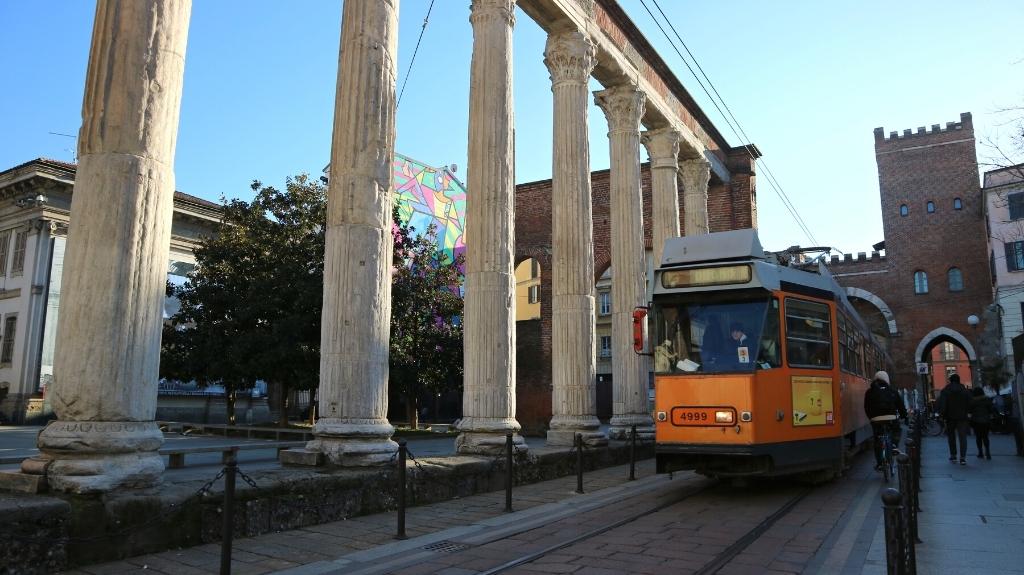
Unfortunately, not everything in Milan is free of charge. The following tips will make sure you don’t break the bank when you visit Italy’s second-largest city.
- Museum entries are quite affordable. Don’t let the small entrance fee stop you from exploring the Duomo or any other museum in Milan. We’re sure you can offset the money some other way.
- Public transport in Milan is fast, convenient, and affordable. A single ticket currently costs €2.00 ($2.25). A 10-ticket carnet is just €18.00 ($20.30), making the price of a single ride only €1.80 ($2.03). Moreover, historical trams service the city center at no extra cost, giving you a unique and cheap way to explore Milan’s sights.
- Sit down dining will cost you more than take away food. Eateries and cafés in Italy charge a service fee per person, called coperto. It ranges from $1.00 to $5.00. To avoid paying it, either drink your beverage at the bar or take your food to go.
- Save a few bucks at dinner by joining the locals for their apperitivo. Many bars offer anything from small snacks to huge buffets with your evening drink. Beverage prices are higher after 7:00 PM, but it’s still cheaper going out for apperitivo than ordering a meal and a drink at a restaurant.
- Tap water in Milan is safe to drink. You’ll find multiple water fountains in the center. Even if you decide to buy mineral water, it won’t set your budget back by more than $1.00 per bottle.
- Espresso is the cheapest beverage you can order. If you love your coffee strong, there’s no better place than Italy to get your caffeine fix. The best part? You can have your espresso shot for as little as $0.50!
What Are Your Favorite Free Things to Do in Milan?

There you have it – the 33 best free things to do in Milan!
Whether you’re looking to promenade lush parks, admire centuries-old magnificent cathedrals, or get lost window shopping in the streets of the city’s coolest areas, we’ve got you covered.
Start Planning Your Trip to Milan with Our BEST Recommendations:
⭐ Top Tours in Milan ⭐
📍 Milan Historical Walking Tour – visit the highlights of Milan’s Renaissance history and skip the lines to see Da Vinci’s “The Last Supper”.
📍 Pasta and Risotto Cooking Class – explore Milan’s central market and learn how to prepare authentic Italian dishes in a fun and entertaining environment.
⭐ Best Accommodations in Milan ⭐
🏨 iQ Hotel Milano – our top pick is this 4* gem near Milano Centrale.
🏨 Heart Milan Apartments Duomo Colonne – funky lodging near the Duomo.
⭐ Easiest Transportation Options in Milan ⭐
🚍 The Milan Pass City Card – enjoy discounts, free travel, and entrances to museums.
🚍 Discover Cars – compare and find the best rates for car rentals.
Now, it’s your turn.
What’s your favorite free thing to do in Milan?
Share with the tribe in the comments below.
